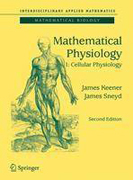
Mathematical Physiology provides an introduction into physiology using the tools and perspectives of mathematical modeling and analysis. The book is divided into two parts, the first dealing with the fundamental principles of cell physiology, and the second with the physiology of systems. This second edition provides coverage of more recent models in the chapters, more stochastic approaches, including single channel analysis and Fokker-Planck and Langevin equations. New chapters on Calcium Dynamics, Neuroendocrine Cells and Regulation of Cell Function have been included. This book will be of interest to researchers,graduate students and advanced undergraduate students in applied mathematics who wish to learn how to build and analyze mathematical models and become familiar with new areas of applications, as well as to physiologists interested inlearning about theoretical approaches to their work. Winner of the prize for The Best Mathematics book of 1998 from the American Association of Publishers.Contains a variety of physiological problems and the current and new mathematical techniques used in this area Numerous exercises and models are included Of interest both to applied mathematicians and quantitative physiologists INDICE: Cellular Physiology.- Biochemical Reactions.- Cellular Homeostasis.- Membrane Ion Channels.- Passive Electrical Flow in Neurons.- Excitability.-Traveling Waves of Electrical Excitation.- Wave Propagation in Higher Dimensions.- Calcium Dynamics.- Intercellular Communication.- Neuroendocrine Cells.- Regulation of Cell Function.
- ISBN: 978-0-387-75846-6
- Editorial: Springer
- Encuadernacion: Cartoné
- Páginas: 615
- Fecha Publicación: 01/10/2008
- Nº Volúmenes: 1
- Idioma: Inglés
